A few months ago I rented an Avenger for a weekend excursion to Chattanooga. As I saw my rental sitting in the parking lot, I couldn’t help but wonder: ‘Is the Avenger really as bad as everyone says it is?’
As a matter of fact, yes it is! I don’t even know where to begin.
It starts and ends with the seats. Aside from the exterior, the driver’s seat will likely be the first and last item one experiences when sampling a Dodge Avenger. And that’s fortuitous as first impressions are as they say, everything. The Avenger’s seats are nice and firm, heavily bolstered, and upholstered in a high-quality cloth. You will be comfortable for short and long journeys alike, that much I guarantee.
Starboard of the driver, directly adjacent to the aforementioned seat, one finds a handbrake, a trifle to some, a godsend to this renter turned amateur automotive critic. As the need to free-up console space continues to increase, handbrakes have rapidly become an endangered species in larger cars such as the Avenger. That’s unfortunate, for having driven hundred of cars this driver has found handbrakes to be far more effective than a footbrake in the event of a sudden emergency. The handbrake in the Avenger worked flawlessly. As well it should. It was only six months old and the electronic odometer read 9,000 miles or thereabouts.
A good pair of buckets and a handbrake fail to compensate for the monstrosity that is the remainder of the Avenger’s interior. It’s an awful interior for a mid-size sedan, and is probably inferior to many of the usual suspects at the head of the compact class. Hard surfaces and cheap plastics abound. The Avenger doesn’t even have patches of upholstery on the doors: Just acres of horrendously cheap plastic. Aside from the seats, everything one touches is invariably molded from plastic, lending the impression that the designers created this wondrous space as an afterthought on a shoestring-budget, which is probably true. It’s an unrewarding interior to spend time in, much less contemplate spending $20,000 on to call your own.
For 2010, Dodge replaced their signature white-faced gauges with a set of backlit gauges of a traditional white on black design. Not a bad idea, but the execution was half-assed. The Avenger’s gauge cluster lacks the elegance of the Malibu’s gauges, or for that matter the Fusion’s techy electroluminescent cluster. Every other mid-size car with illuminated gauges does it better. Contrary to the designers’ intentions, the illuminated gauges actually cheapen the interior. Not at all what the lowly Avenger needed. To be frank, the gauges go well beyond cheap. It’s as if some bored Chrysler engineers one day came to the realization that as other competitors offer illuminated gauges, so too must their beloved Avenger. Dodge would have been better off sticking with the old white-face gauges. They looked great and were easy to read.
The same mediocre “me too, just not as well” mentality can be seen in other facets of the Avenger’s interior. Like many competitors, there’s an adjustable center armrest that can move forward or retract to compensate for a driver’s size, or in the case of yours truly, the lack thereof. My 2003 Accord has this device, and a multitude of current cars like Camrys and Malibus employ this most clever of features. On the Avenger the execution of this feature fails to match the concept, which pretty much sums up the car. Though not hard to the touch, the vinyl-covered surface of the armrest is flat and finished with a mildly abrasive crosshatch pattern. It’s not a comfortable platform to rest one’s arm for a prolonged duration of time, which of course what an armrest is designed to do. I have to admit, that one had me flummoxed. Like the illuminated gauges, it’s obvious that Chrysler’s engineers took the time to examine what other competitors were doing with their mid-sizers, but the piss-poor implementation of these simple yet noticeable features renders them irrelevant. There’s absolutely no point in including them if they fail to improve the car as a whole.
On a more positive note, the Avenger interior is user-friendly. All of the primary controls are intuitive and easy to use. Both stalks flanking the steering column fall readily to hand. The steering wheel tilts and telescopes. The three rotary knobs for the climate control are well-placed. The non-integrated stereo is mounted nice and high, the main controls being easy to master, though it does take a degree of concentration to sort between MP3 folders. If you absolutely must listen to your favorite song this very second, please do us all a favor and find it at a stoplight.
Like the rest of the car, the back seat and the trunk quite literally come up short. I don’t recall the specs, nor do I feel like looking them up, but they’re probably both due south of average. The rear squab is low to the floor and the steeply raked rear-window limits headroom. I had no problem fitting back there, all 5’6” and 135 lb. of me, but it was not the most convivial environment. Your average six-footer might find the rear quarters a trifle less accommodating. Forget about peering out the chamfered rear-window. If you’re short like me, it’s not going to happen. The common theme of mediocrity carries over to the trunk. It’s well shaped, but sticking one’s noggin through the opening reveals a visibly smaller space than one would find in a Sonata or Camry, though the thankfully backseat and front passenger seat fold relatively flat to accommodate longer items.
Piloting the Avenger was equally unedifying. I’ll readily concede that the average driver navigating a midsize sedan won’t flog their weapon of choice as pitilessly as I did with my hapless Avenger, but it’s worth mentioning that most of the Avenger’s competitors more than rise to the occasion when given the boot. On paper the Avenger’s drivetrain doesn’t look all that bad. Granted, it only has a four-speed auto, but many four-speed autos work very well with the engine they’re mated too. This is not the case with the Avenger, the marriage between engine and transmission proving to be a tumultuous pairing. The engine powering my steed, the 2.4 DOHC GEMA ‘World Motor,’ is good for 173 hp, about average for the class. It’s the same basic engine that turned many a faultless mile in my ’07 Sonata. It’s a fairly peaky motor, most of the useable power being high up in the rev-range. To extract the most out of the engine a smooth and intelligent transmission is needed, but the four-speed slushbox in the Avenger lacks both brains and charm. Foot to the floor, acceleration isn’t bad, but hardly class leading. Driven less vigorously, as most drivers are inclined to do, the Avenger is always in the wrong gear at the wrong time, which equals unsatisfying motoring for enthusiast and layperson alike. The net result is that under normal driving conditions, the Avenger feels downright sluggish, slower than it actually is. In addition to choosing the wrong gears, the transmission was always reluctant to downshift, which only increased the sensation of lethargy and epic fail that was rapidly becoming the Avenger’s defining trait.
Manually controlling the transmission was to no avail. The now ubiquitous Mercedes style shift gate gives the Avenger driver three options for forward motion; ‘D,’ ‘3,’ and ‘L.’ None of these options were ideally suited for sustained driving in the mountains of northwestern Georgia. I would have liked to select and hold second gear on these windy roads with hairpin turns, and that was the one gear I couldn’t access and hold at 40 mph. An Autostick feature would have helped matters considerably. Another viable option would be to put an overdrive lockout switch on the shifter, and change the shift quadrant to ‘D,’ ‘2,’ and ‘L.’
The Avenger managed to somewhat redeem itself on the highway. Cruising at 75 mph across vast ribbons of asphalt masked the shortcomings of the incompetent transmission, as well as the deficiencies of the middle-of-the-road suspension tuning that tries to satisfy everybody, but likely pleases no one.
Styling is clearly subjective, but I think it’s obvious to anyone possessing a modicum of aesthetic taste that the haphazardly applied ‘Mini-Me’ Charger styling is woefully unsuited to the Avenger. The coke-bottle themed profile that worked so well on the gargantuan Chryslers of yesteryear and dare I say it, the Charger of today, is completely unsuited to the Avenger. Basically, what we have here is a design language that fails to work cohesively on a car of the Avenger’s scale and driveline configuration. I don’t know why this is the case, as many far smaller cars (c. 1970’s Ford Granadas and Cortinas come to mind) successfully employed coke-bottle silhouettes to great effect. A single glance reveals the entire story. A tall, bluff hood shrouds a dumpy front overhang, wheel arches mercilessly abutting the front doors. Equally disjointed are the coke-bottle rear fenders that abruptly conclude with the stubby tail of a trunk. The whole point of the ‘coke-bottle look’ was to accentuate a car’s horizontal lines, thereby masking a car’s height. The ploy fails with the fugly Avenger, with it’s blunt ends and tiny little greenhouse. Let’s just leave it at that.
The middling deficiencies that define the Avenger all add up to a car that’s clearly on the ass-end of average. The Avenger fails not because it’s diabolically bad. It fails because it lags behind every other mid-size by just about any metric one can possibly critique an automobile. Yes, it seats four, carries luggage, and gets decent mileage as do other mid-size sedans. Unfortunately that’s not enough to garner even faint praise in today’s ruthless marketplace. The cars of today are just too good. The vast majority of the cars that the Avenger competes with are superb all-rounders, and even the ones that are not tend to be exemplary one-trick ponies. There not a single thing the Avenger does specifically well. It doesn’t have a silken ride like a Camry. It’s not entertaining to drive like an Accord or Fusion. There’s no pretty dashboard to be found like the one in the Malibu. It won’t get 35mpg like the new Sonata, unless perhaps you drive it downhill in neutral. The poor unloved Avenger isn’t even blessed with a pretty face to mask its litany of shortcomings. Truth be told, it’s a rather pathetic automobile, and I genuinely felt bad for Chrysler Co. after having spent a weekend sampling their alternative to the latest Accord. I certainly don’t envy anyone who’s burdened with the task of marketing or selling the Avenger. They have an arduous task ahead of them, to say the least.
With luck, many of the Avenger’s shortcomings (emphasis on ‘many’) will likely be addressed when it and its fraternal twin the Sebring receive their much hyped and eagerly anticipated MCE, due in about a year’s time. I’ll keep my fingers crossed. Whatever the result may be, I can’t fathom the upcoming Avenger being any worse than it already is, not that it’s any consolation.
![Image]()
![Image]()
![Image]()
![Image]()
![Image]()
![Image]()
![Image]()
![Image]()
Acres of plastic, and a dinky door pocket.
![Image]()
The cooled drink compartment was kind of nifity, but I'd settle for more general storage.
![Image]()
The dial turns on the vent for the cooled drink compartment. I don't normally drive around with a six-pack ready to go, so I didn't try it out.
![Image]()
![Image]()
![Image]()
![Image]()
![Image]()
Adequate space, nothing more.
![Image]()
The heart of the beast. And a hood held up by a prop rod!
As a matter of fact, yes it is! I don’t even know where to begin.
It starts and ends with the seats. Aside from the exterior, the driver’s seat will likely be the first and last item one experiences when sampling a Dodge Avenger. And that’s fortuitous as first impressions are as they say, everything. The Avenger’s seats are nice and firm, heavily bolstered, and upholstered in a high-quality cloth. You will be comfortable for short and long journeys alike, that much I guarantee.
Starboard of the driver, directly adjacent to the aforementioned seat, one finds a handbrake, a trifle to some, a godsend to this renter turned amateur automotive critic. As the need to free-up console space continues to increase, handbrakes have rapidly become an endangered species in larger cars such as the Avenger. That’s unfortunate, for having driven hundred of cars this driver has found handbrakes to be far more effective than a footbrake in the event of a sudden emergency. The handbrake in the Avenger worked flawlessly. As well it should. It was only six months old and the electronic odometer read 9,000 miles or thereabouts.
A good pair of buckets and a handbrake fail to compensate for the monstrosity that is the remainder of the Avenger’s interior. It’s an awful interior for a mid-size sedan, and is probably inferior to many of the usual suspects at the head of the compact class. Hard surfaces and cheap plastics abound. The Avenger doesn’t even have patches of upholstery on the doors: Just acres of horrendously cheap plastic. Aside from the seats, everything one touches is invariably molded from plastic, lending the impression that the designers created this wondrous space as an afterthought on a shoestring-budget, which is probably true. It’s an unrewarding interior to spend time in, much less contemplate spending $20,000 on to call your own.
For 2010, Dodge replaced their signature white-faced gauges with a set of backlit gauges of a traditional white on black design. Not a bad idea, but the execution was half-assed. The Avenger’s gauge cluster lacks the elegance of the Malibu’s gauges, or for that matter the Fusion’s techy electroluminescent cluster. Every other mid-size car with illuminated gauges does it better. Contrary to the designers’ intentions, the illuminated gauges actually cheapen the interior. Not at all what the lowly Avenger needed. To be frank, the gauges go well beyond cheap. It’s as if some bored Chrysler engineers one day came to the realization that as other competitors offer illuminated gauges, so too must their beloved Avenger. Dodge would have been better off sticking with the old white-face gauges. They looked great and were easy to read.
The same mediocre “me too, just not as well” mentality can be seen in other facets of the Avenger’s interior. Like many competitors, there’s an adjustable center armrest that can move forward or retract to compensate for a driver’s size, or in the case of yours truly, the lack thereof. My 2003 Accord has this device, and a multitude of current cars like Camrys and Malibus employ this most clever of features. On the Avenger the execution of this feature fails to match the concept, which pretty much sums up the car. Though not hard to the touch, the vinyl-covered surface of the armrest is flat and finished with a mildly abrasive crosshatch pattern. It’s not a comfortable platform to rest one’s arm for a prolonged duration of time, which of course what an armrest is designed to do. I have to admit, that one had me flummoxed. Like the illuminated gauges, it’s obvious that Chrysler’s engineers took the time to examine what other competitors were doing with their mid-sizers, but the piss-poor implementation of these simple yet noticeable features renders them irrelevant. There’s absolutely no point in including them if they fail to improve the car as a whole.
On a more positive note, the Avenger interior is user-friendly. All of the primary controls are intuitive and easy to use. Both stalks flanking the steering column fall readily to hand. The steering wheel tilts and telescopes. The three rotary knobs for the climate control are well-placed. The non-integrated stereo is mounted nice and high, the main controls being easy to master, though it does take a degree of concentration to sort between MP3 folders. If you absolutely must listen to your favorite song this very second, please do us all a favor and find it at a stoplight.
Like the rest of the car, the back seat and the trunk quite literally come up short. I don’t recall the specs, nor do I feel like looking them up, but they’re probably both due south of average. The rear squab is low to the floor and the steeply raked rear-window limits headroom. I had no problem fitting back there, all 5’6” and 135 lb. of me, but it was not the most convivial environment. Your average six-footer might find the rear quarters a trifle less accommodating. Forget about peering out the chamfered rear-window. If you’re short like me, it’s not going to happen. The common theme of mediocrity carries over to the trunk. It’s well shaped, but sticking one’s noggin through the opening reveals a visibly smaller space than one would find in a Sonata or Camry, though the thankfully backseat and front passenger seat fold relatively flat to accommodate longer items.
Piloting the Avenger was equally unedifying. I’ll readily concede that the average driver navigating a midsize sedan won’t flog their weapon of choice as pitilessly as I did with my hapless Avenger, but it’s worth mentioning that most of the Avenger’s competitors more than rise to the occasion when given the boot. On paper the Avenger’s drivetrain doesn’t look all that bad. Granted, it only has a four-speed auto, but many four-speed autos work very well with the engine they’re mated too. This is not the case with the Avenger, the marriage between engine and transmission proving to be a tumultuous pairing. The engine powering my steed, the 2.4 DOHC GEMA ‘World Motor,’ is good for 173 hp, about average for the class. It’s the same basic engine that turned many a faultless mile in my ’07 Sonata. It’s a fairly peaky motor, most of the useable power being high up in the rev-range. To extract the most out of the engine a smooth and intelligent transmission is needed, but the four-speed slushbox in the Avenger lacks both brains and charm. Foot to the floor, acceleration isn’t bad, but hardly class leading. Driven less vigorously, as most drivers are inclined to do, the Avenger is always in the wrong gear at the wrong time, which equals unsatisfying motoring for enthusiast and layperson alike. The net result is that under normal driving conditions, the Avenger feels downright sluggish, slower than it actually is. In addition to choosing the wrong gears, the transmission was always reluctant to downshift, which only increased the sensation of lethargy and epic fail that was rapidly becoming the Avenger’s defining trait.
Manually controlling the transmission was to no avail. The now ubiquitous Mercedes style shift gate gives the Avenger driver three options for forward motion; ‘D,’ ‘3,’ and ‘L.’ None of these options were ideally suited for sustained driving in the mountains of northwestern Georgia. I would have liked to select and hold second gear on these windy roads with hairpin turns, and that was the one gear I couldn’t access and hold at 40 mph. An Autostick feature would have helped matters considerably. Another viable option would be to put an overdrive lockout switch on the shifter, and change the shift quadrant to ‘D,’ ‘2,’ and ‘L.’
The Avenger managed to somewhat redeem itself on the highway. Cruising at 75 mph across vast ribbons of asphalt masked the shortcomings of the incompetent transmission, as well as the deficiencies of the middle-of-the-road suspension tuning that tries to satisfy everybody, but likely pleases no one.
Styling is clearly subjective, but I think it’s obvious to anyone possessing a modicum of aesthetic taste that the haphazardly applied ‘Mini-Me’ Charger styling is woefully unsuited to the Avenger. The coke-bottle themed profile that worked so well on the gargantuan Chryslers of yesteryear and dare I say it, the Charger of today, is completely unsuited to the Avenger. Basically, what we have here is a design language that fails to work cohesively on a car of the Avenger’s scale and driveline configuration. I don’t know why this is the case, as many far smaller cars (c. 1970’s Ford Granadas and Cortinas come to mind) successfully employed coke-bottle silhouettes to great effect. A single glance reveals the entire story. A tall, bluff hood shrouds a dumpy front overhang, wheel arches mercilessly abutting the front doors. Equally disjointed are the coke-bottle rear fenders that abruptly conclude with the stubby tail of a trunk. The whole point of the ‘coke-bottle look’ was to accentuate a car’s horizontal lines, thereby masking a car’s height. The ploy fails with the fugly Avenger, with it’s blunt ends and tiny little greenhouse. Let’s just leave it at that.
The middling deficiencies that define the Avenger all add up to a car that’s clearly on the ass-end of average. The Avenger fails not because it’s diabolically bad. It fails because it lags behind every other mid-size by just about any metric one can possibly critique an automobile. Yes, it seats four, carries luggage, and gets decent mileage as do other mid-size sedans. Unfortunately that’s not enough to garner even faint praise in today’s ruthless marketplace. The cars of today are just too good. The vast majority of the cars that the Avenger competes with are superb all-rounders, and even the ones that are not tend to be exemplary one-trick ponies. There not a single thing the Avenger does specifically well. It doesn’t have a silken ride like a Camry. It’s not entertaining to drive like an Accord or Fusion. There’s no pretty dashboard to be found like the one in the Malibu. It won’t get 35mpg like the new Sonata, unless perhaps you drive it downhill in neutral. The poor unloved Avenger isn’t even blessed with a pretty face to mask its litany of shortcomings. Truth be told, it’s a rather pathetic automobile, and I genuinely felt bad for Chrysler Co. after having spent a weekend sampling their alternative to the latest Accord. I certainly don’t envy anyone who’s burdened with the task of marketing or selling the Avenger. They have an arduous task ahead of them, to say the least.
With luck, many of the Avenger’s shortcomings (emphasis on ‘many’) will likely be addressed when it and its fraternal twin the Sebring receive their much hyped and eagerly anticipated MCE, due in about a year’s time. I’ll keep my fingers crossed. Whatever the result may be, I can’t fathom the upcoming Avenger being any worse than it already is, not that it’s any consolation.
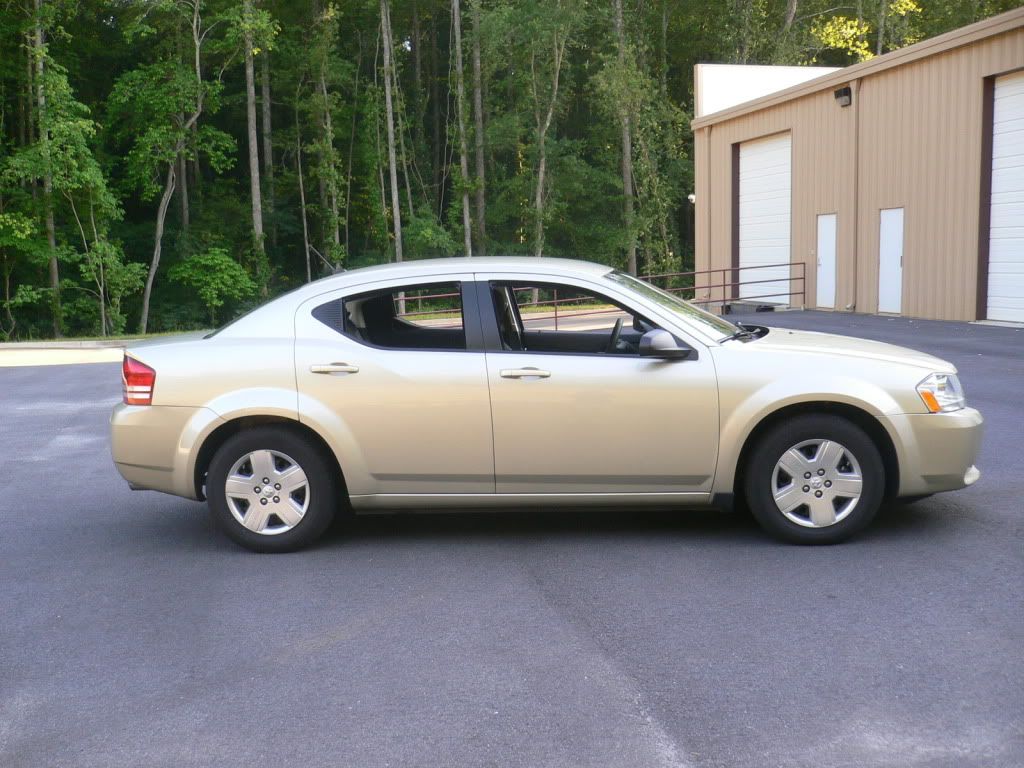
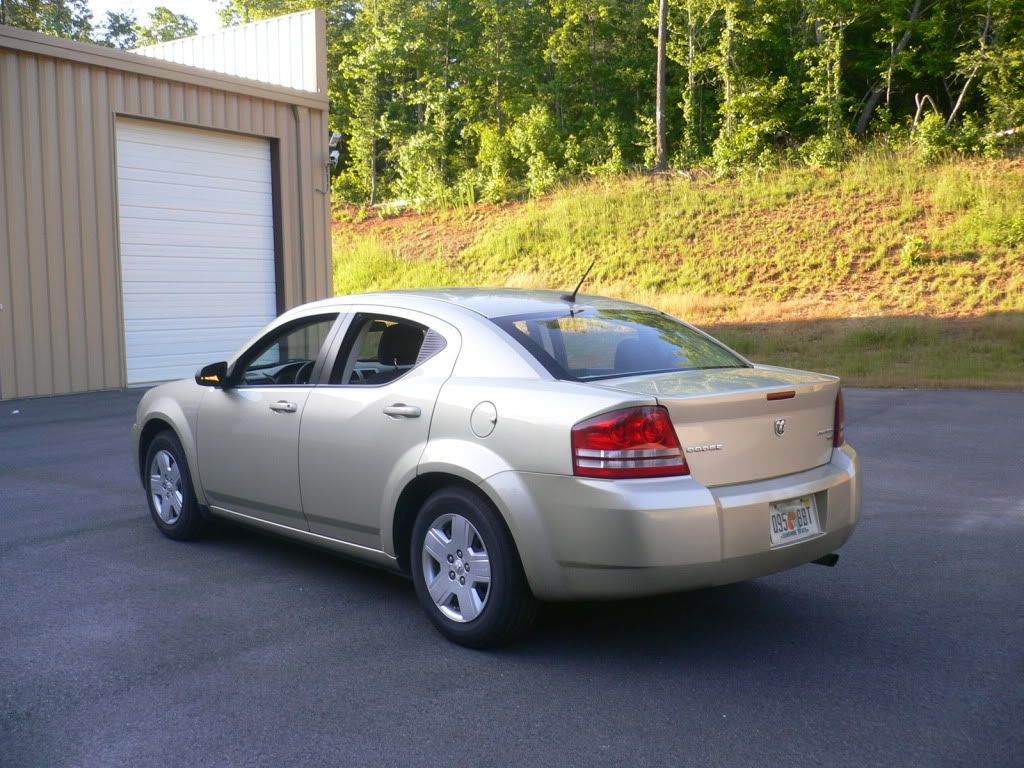
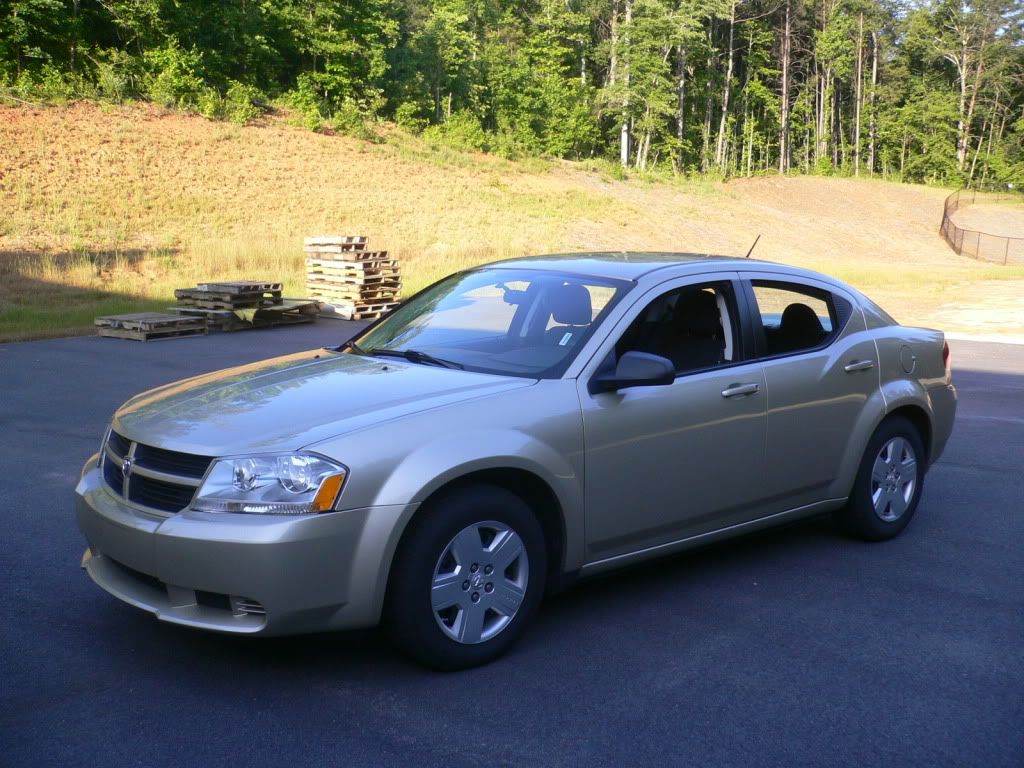
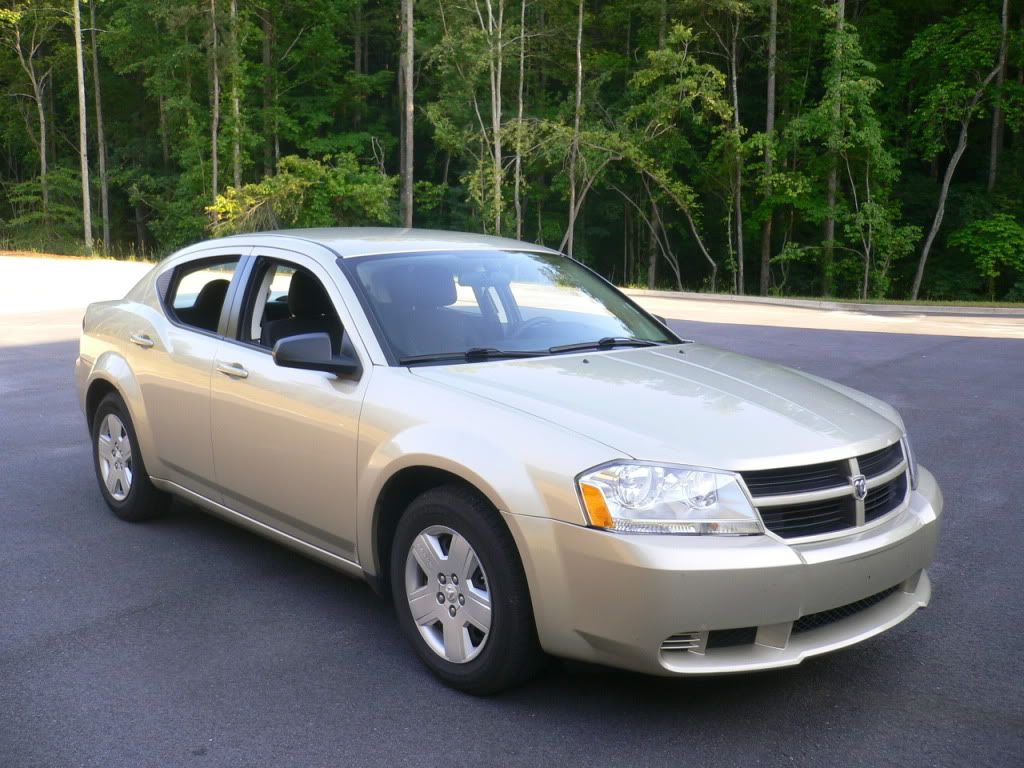
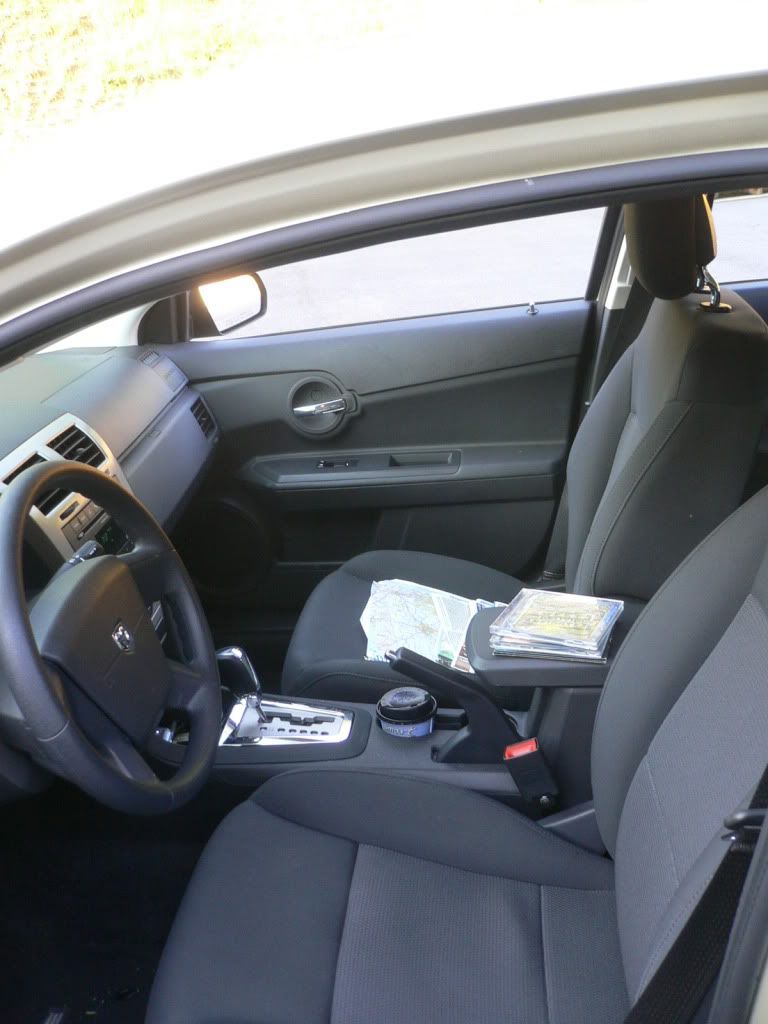
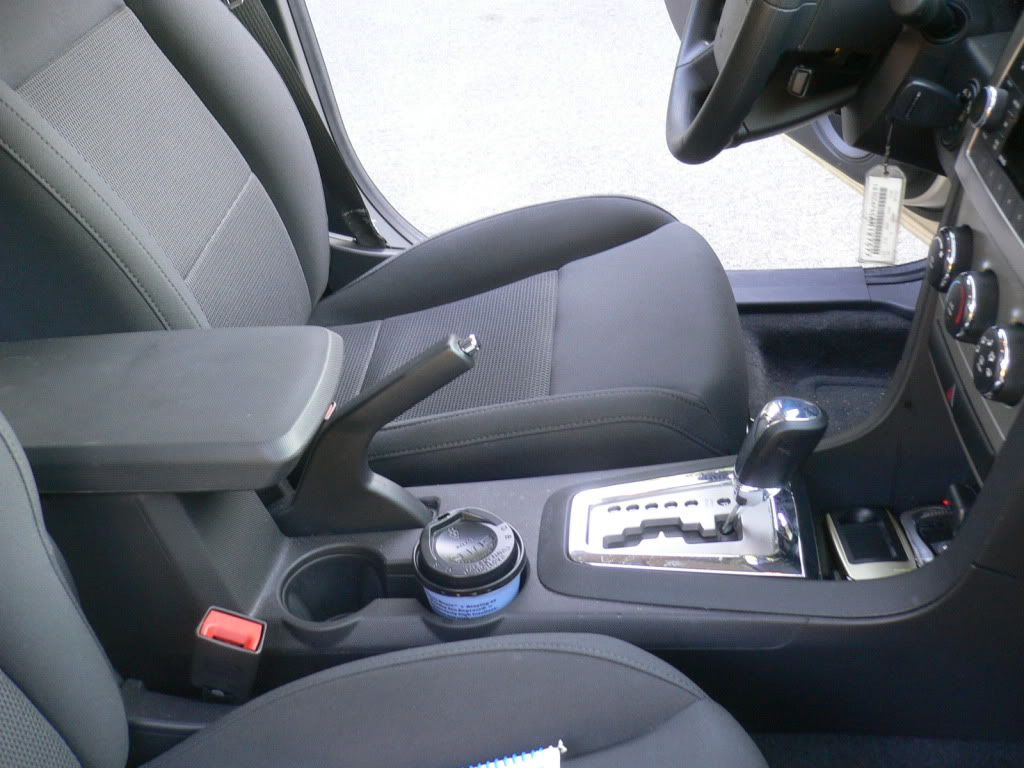
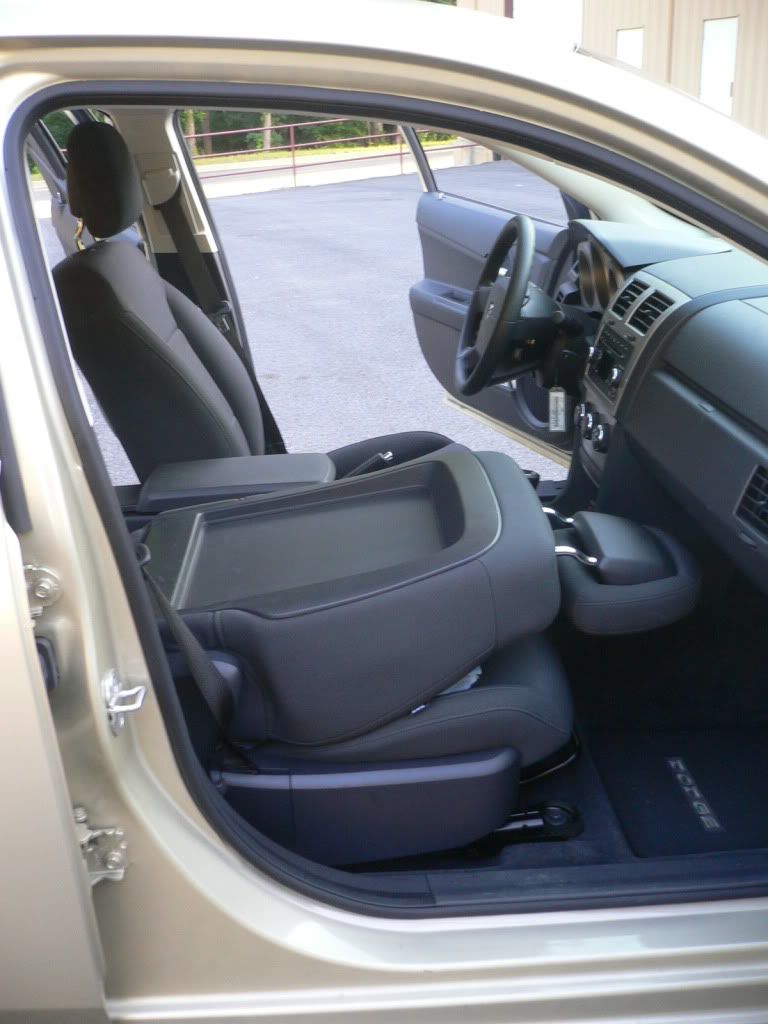
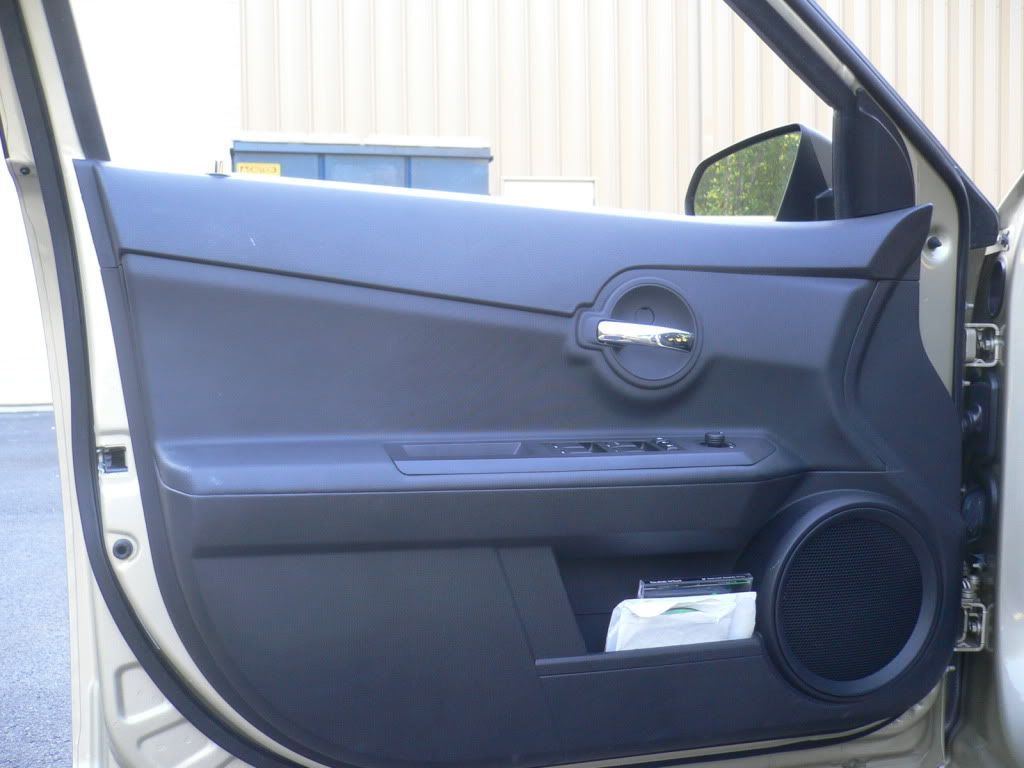
Acres of plastic, and a dinky door pocket.
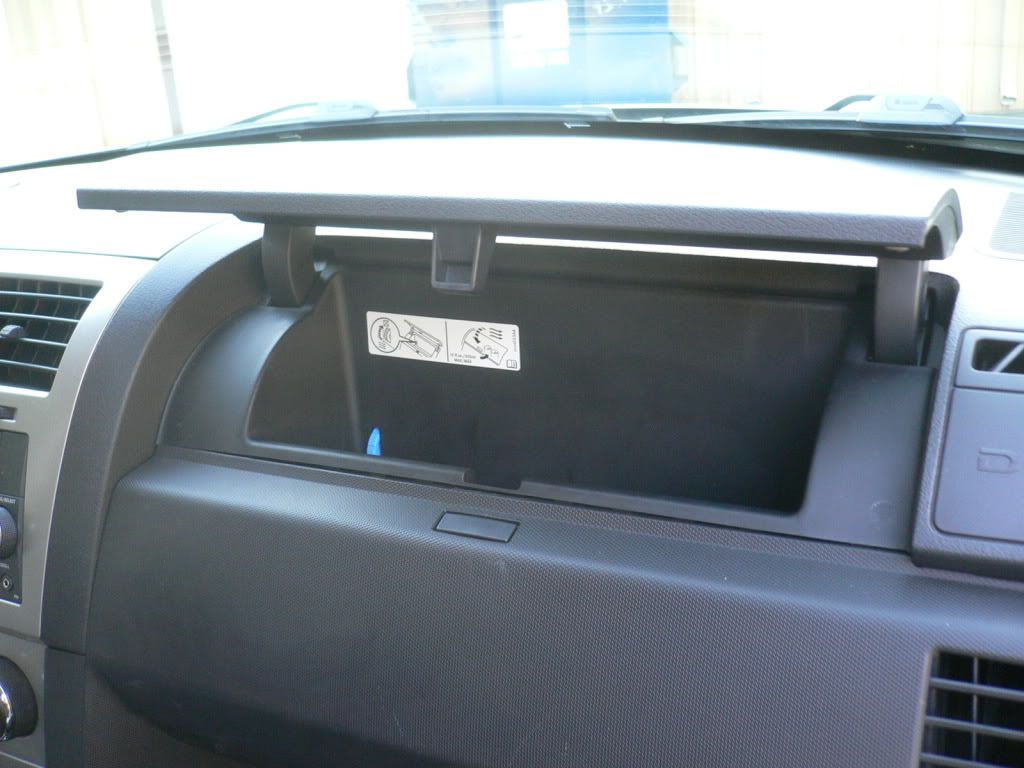
The cooled drink compartment was kind of nifity, but I'd settle for more general storage.
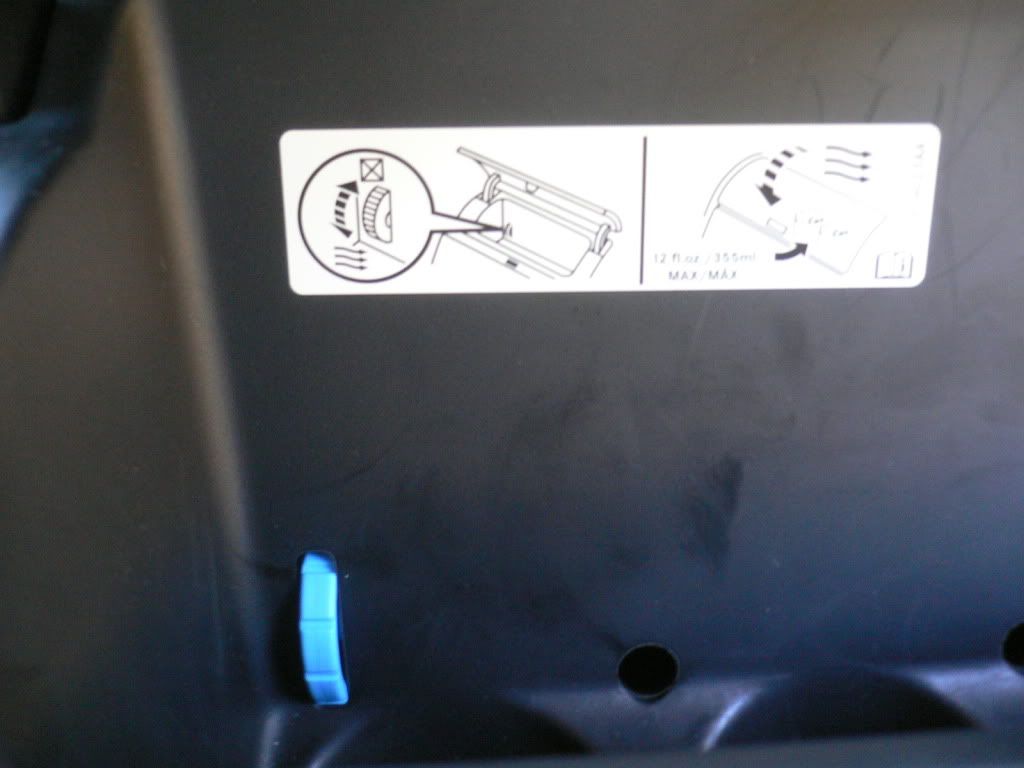
The dial turns on the vent for the cooled drink compartment. I don't normally drive around with a six-pack ready to go, so I didn't try it out.
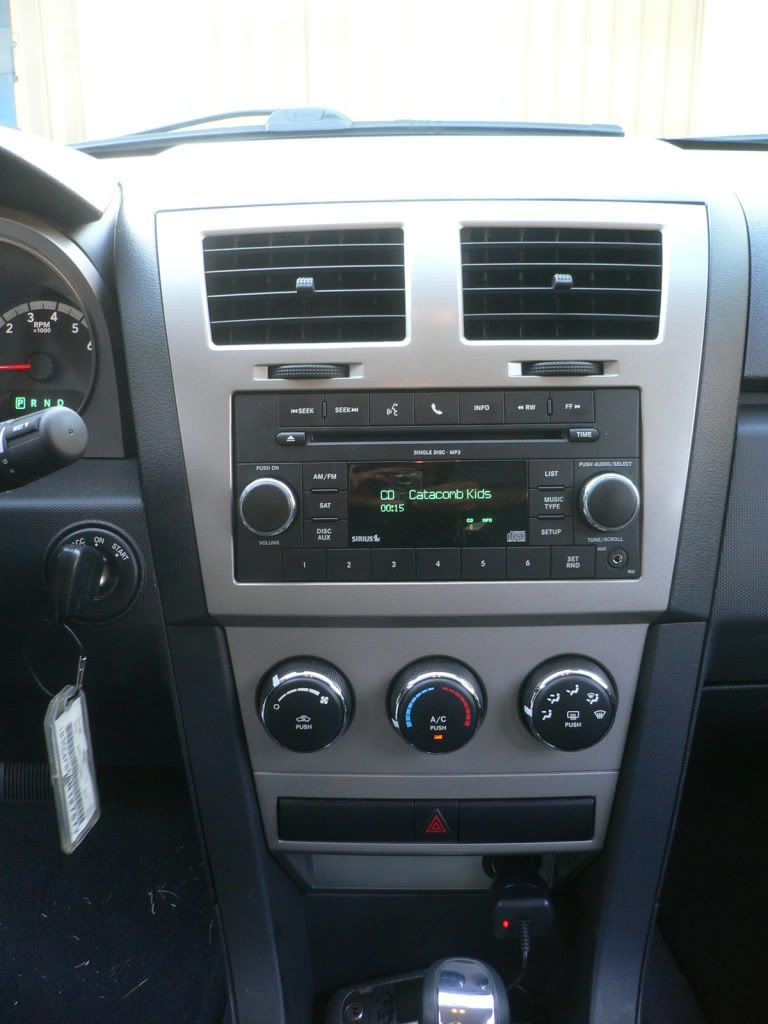
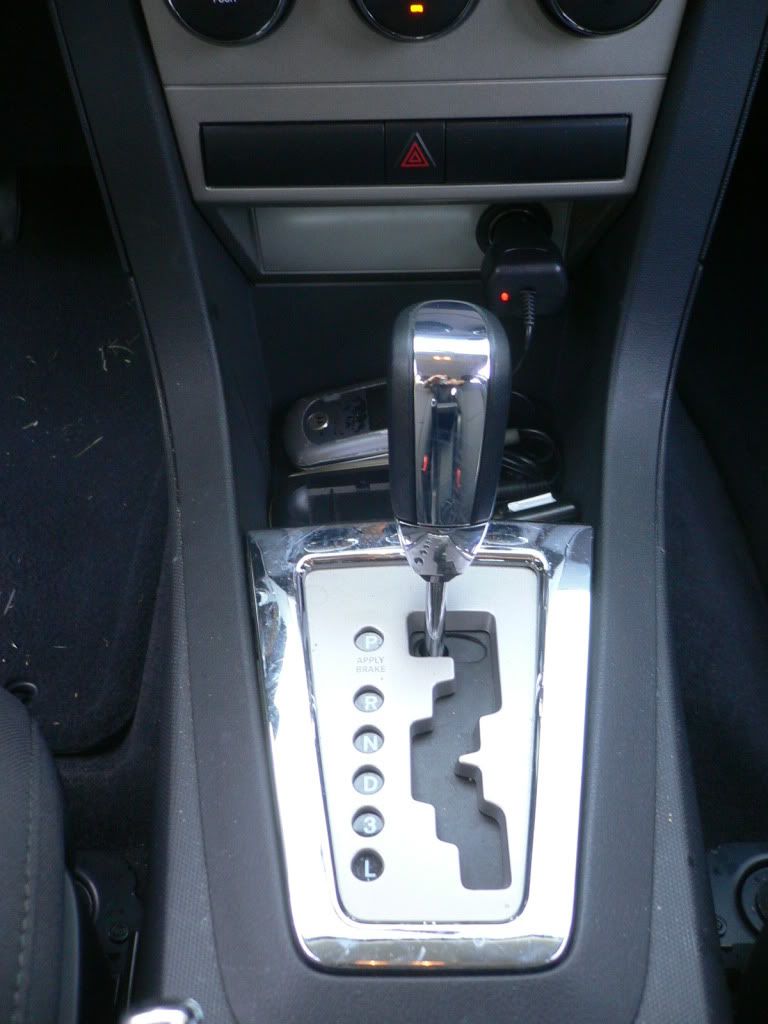
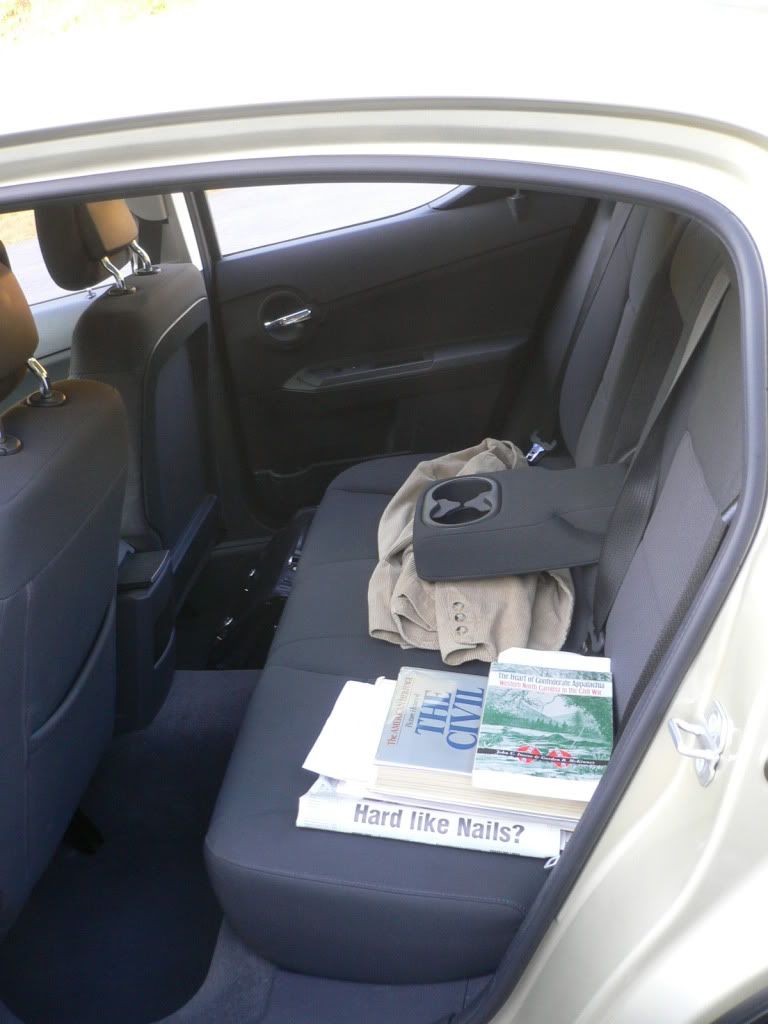

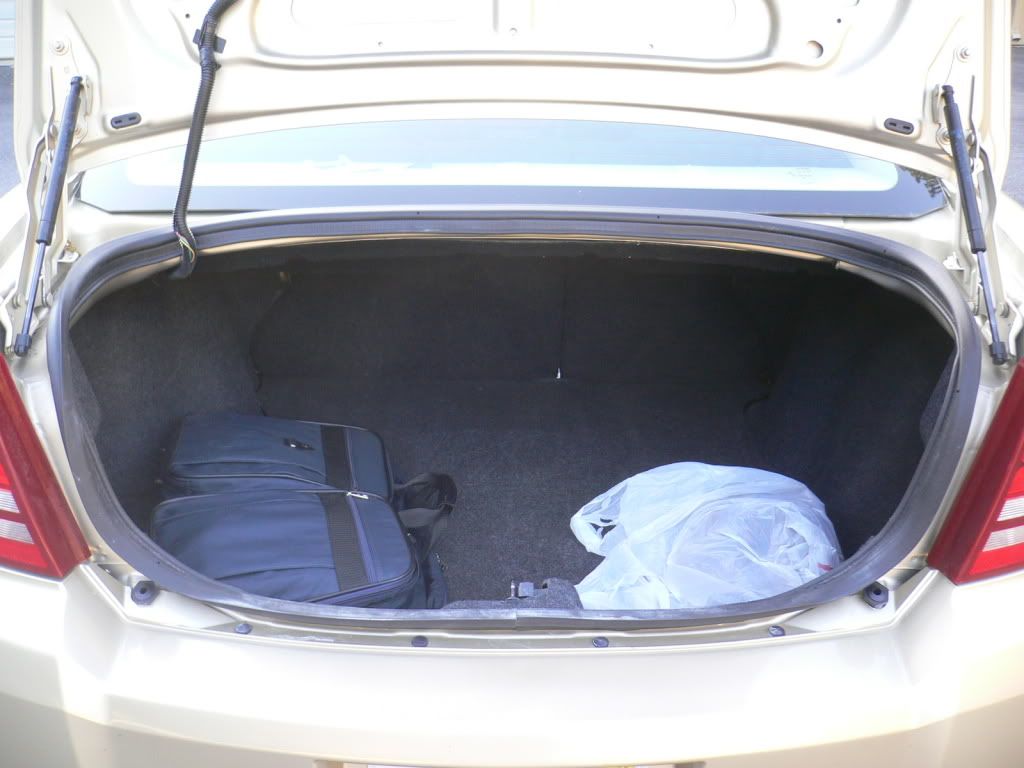
Adequate space, nothing more.
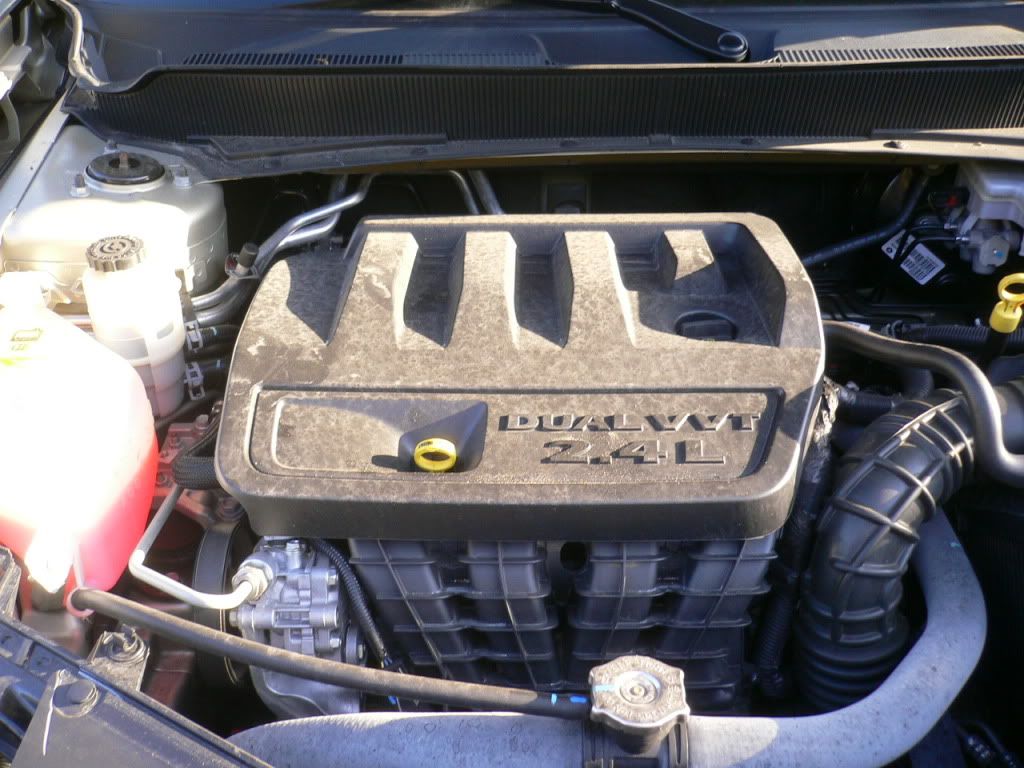
The heart of the beast. And a hood held up by a prop rod!




